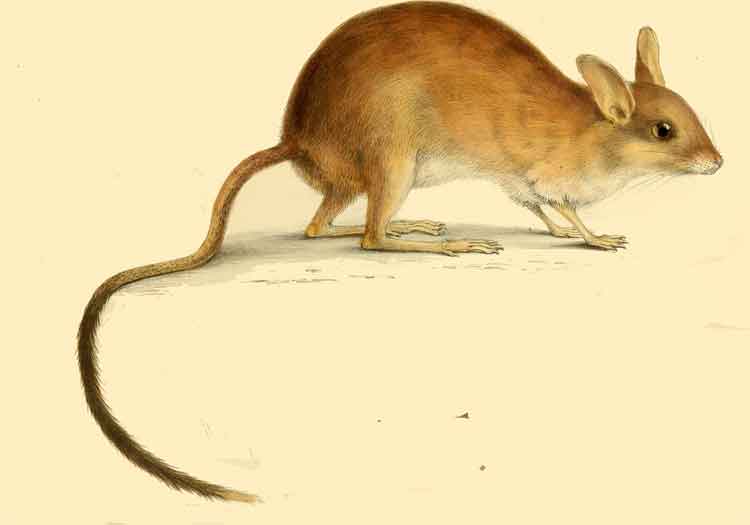
Superregnum: Eukaryota
Cladus: Unikonta
Cladus: Opisthokonta
Cladus: Holozoa
Regnum: Animalia
Subregnum: Eumetazoa
Cladus: Bilateria
Cladus: Nephrozoa
Superphylum: Deuterostomia
Phylum: Chordata
Subphylum: Vertebrata
Infraphylum: Gnathostomata
Megaclassis: Osteichthyes
Cladus: Sarcopterygii
Cladus: Rhipidistia
Cladus: Tetrapodomorpha
Cladus: Eotetrapodiformes
Cladus: Elpistostegalia
Superclassis: Tetrapoda
Cladus: Reptiliomorpha
Cladus: Amniota
Cladus: Synapsida
Cladus: Eupelycosauria
Cladus: Sphenacodontia
Cladus: Sphenacodontoidea
Cladus: Therapsida
Cladus: Theriodontia
Cladus: Cynodontia
Cladus: Eucynodontia
Cladus: Probainognathia
Cladus: Prozostrodontia
Cladus: Mammaliaformes
Classis: Mammalia
Subclassis: Trechnotheria
Infraclassis: Zatheria
Supercohors: Theria
Cohors: Eutheria
Infraclassis: Placentalia
Cladus: Boreoeutheria
Superordo: Euarchontoglires
Ordo: Rodentiaa
Subordo: Myomorpha
Superfamilia: Muroidea
Familia: Muridae
Subfamilia: Murinae
Tribus: Hydromyini
Genus: Notomys
Species: †Notomys longicaudatus
Name
Notomys longicaudatus (Gould, 1844)
Type locality: Australia, Western Australia, Moore River (as restricted by Thomas’s lectotype designation; see Mahoney and Richardson, 1988:168).
Holotype: Lectotype BMNH 44.7.9.15 & 44.10.15.3
Synonyms
Notomys sturti Thomas, 1921
References
Gould, J. 1844. Exhibition and character of a number of animals, &c. transmitted from Australia by Mr. Gilbert. Proceedings of the Zoological Society of London, 1844: 104
Thomas, O. 1921. Notes on the species of Notomys, the Australian jerboa-rats. Annals and Magazine of Natural History, Series 9, 8:536–541 [537]
Notomys longicaudatus in Mammal Species of the World.
Wilson, Don E. & Reeder, DeeAnn M. (Editors) 2005. Mammal Species of the World – A Taxonomic and Geographic Reference. Third edition. ISBN 0-8018-8221-4.
IUCN: Notomys longicaudatus (Gould, 1844) (Extinct)
Notomys longicaudatus (Gould, 1844) – Taxon details on Integrated Taxonomic Information System (ITIS).
Vernacular names
English: Long-tailed Hopping Mouse
español: Ratones Saltadores De Australia
suomi: Pitkähäntäaustralianhyppyrotta
français: Souris Sauteuse
The long-tailed hopping mouse (Notomys longicaudatus) is an extinct species of rodent in the family Muridae. It was found only in Australia. It is known from a handful of specimens,[2] the last of which was collected in 1901[1][3] or possibly 1902.[2][4] It is presumed to have become extinct within a few decades from then[4] – possibly several decades in view of a skull fragment found in an owl pellet in 1977.[3] The cause of extinction is unknown,[2] but may be a variety of factors including predation and habitat alteration. Little is known of its biology[3] other than that it dug burrows in stiff clay soils.[3] It was less a pest to humans than other hopping mice,[3] although it would eat raisins.[3] The mouse was mainly gray in colour with small pink ears and big eyes with a long hairy pink tail about two inches longer than its own body.[citation needed] It was first described by John Gould on the basis of specimens sent to him from Australia.[5]
Taxonomy
The specimens were obtained in 1843 by John Gilbert. Gilbert sent five specimens that he collected to John Gould, who published the description as Notomys longicaudatus. The first specimen was discovered near Alice Springs, while Gilbert was on a scientific expedition to Australia.
Description
The average adult would measure about 10–11 inches, according to official measurement by John Gould. The body without the tail would be about 4 inches in length in adults. The tail without the body would be about 6–7 inches in length in adults. The mouse had a grey coat with pink ears, large black eyes, and a long pink tail with bristles of hair on it. Unlike its relatives such as the short-tailed hopping mouse, the great hopping mouse, and the Mitchell's hopping mouse, the long-tailed hopping mouse was small compared to its long tail.
Diet
The diet of the long-tailed hopping mouse consisted of fruits, grain, and plants. According to John Gould, the long-tailed hopping mouse liked raisins very much, but it was not considered a pest like its relatives. Long-tailed hopping mice would stay near farms and grocery stores because of the decrease in food the rapid populating was causing.
Distribution and habitat
The long-tailed hopping mouse's habitat was in inland Australia. It ranged in the Northern Territory, South Australia, New South Wales[6] and Western Australia. It preferred dry humid areas where there was greenery with it. The long-tailed hopping mouse dug burrows in clay-like ground and would use the excess soil to build layers above the ground to collect dew and moisture in the morning so it would have some type of water source.
Decrease and extinction
It was not until the 1890s that the long-tailed hopping mouse was considered endangered. The last known report of a live long-tailed hopping mouse was in 1901, when a captive individual died at an Adelaide scientific lab. The theory of the long-tailed hopping mouse's extinction was that it became extinct either due to rapid population increases in its habitat or because of over-hunting by fox, wild cats, thylacine, hawks, and owls. Although the long-tailed hopping mouse has been considered extinct since 1901, a skeleton was discovered near Kalgoorlie in 1944, and a skeleton of a long-tailed hopping mouse was discovered in an owl pellet in 1977. Although those two specimens have been discovered, it will not be considered still living until a live specimen is captured.
References
Musser, G.G.; Carleton, M.D. (2005). "Notomys longicaudatus". In Wilson, D.E.; Reeder, D.M (eds.). Mammal Species of the World: A Taxonomic and Geographic Reference (3rd ed.). Johns Hopkins University Press. pp. 894–1531. ISBN 978-0-8018-8221-0. OCLC 62265494.
Burbidge, A.A.; Woinarski, J. (2016). "Notomys longicaudatus". IUCN Red List of Threatened Species. 2016: e.T14864A22401520. doi:10.2305/IUCN.UK.2016-1.RLTS.T14864A22401520.en. Retrieved 13 November 2021.
"Long-tailed Hopping-mouse (Notomys longicaudatus)". The Rainforest Information Centre. Retrieved 2011-04-17.
Pavey, Chris (May 2006). "Notomys longicaudatus" (PDF). Department of Natural Resources, Environment and the Arts, Northern Territory Government. Archived from the original (PDF) on 2008-09-03. Retrieved 2011-04-17.
Gould, John (1844). "Exhibition and character of a number of animals, &c. transmitted from Australia by Mr. Gilbert". Proceedings of the Zoological Society of London, 1844: 104.
Ellis, M. (1995). A discussion of the large extinct rodents of Mootwingee National Park, western New South Wales. Australian Zoologist. 30:1-4.
Retrieved from "http://en.wikipedia.org/"
All text is available under the terms of the GNU Free Documentation License

